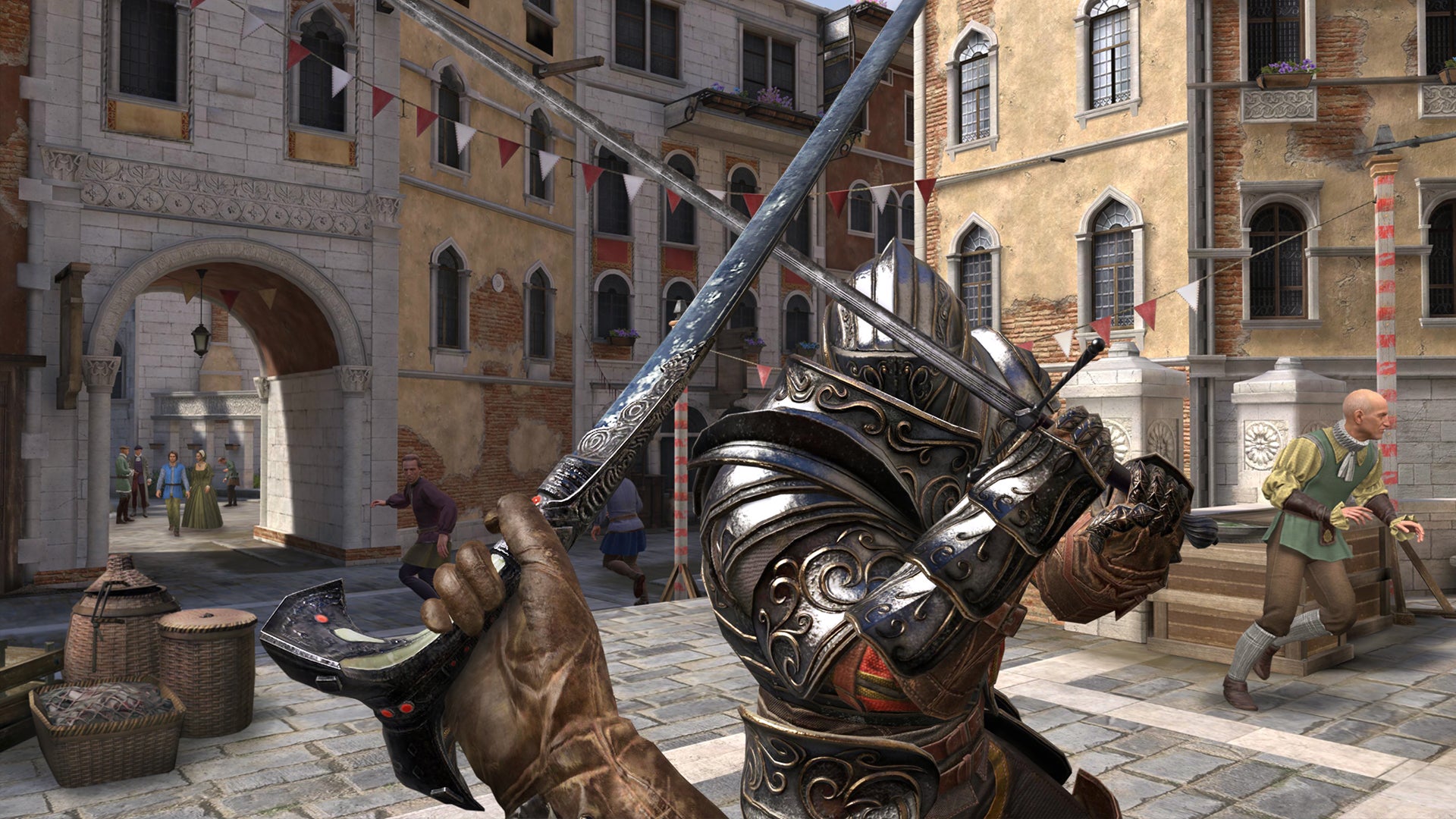- First-person stabbing in historical settings: This article discusses the growing popularity of first-person stabbing games set in historical settings.
- Rise in popularity: First-person stabbing games have gained significant popularity in recent years, with players showing a growing interest in historically accurate settings.
- Realistic gameplay: These games aim to provide players with a highly realistic stabbing experience, recreating historical weapons, combat techniques, and environments.
- Attention to historical detail: Developers of first-person stabbing games put a lot of effort into researching and recreating historically accurate settings, ensuring that players feel immersed in the time period.
- Appeal to history enthusiasts: These games have found a particularly receptive audience among history enthusiasts who enjoy the opportunity to experience and interact with historical events.
- Increasing diversity of settings: First-person stabbing games are expanding beyond traditional medieval settings and exploring other historical periods such as Ancient Rome, Feudal Japan, and the American Revolution.
- Mix of education and entertainment: Some developers are incorporating educational elements into these games, providing players with additional historical context and information as they play.
- Controversy and criticism: The violent nature of first-person stabbing games set in historical settings has led to some controversy and criticism, with concerns about the trivialization of violence and the glorification of historical conflicts.
- Impact on historical knowledge: Proponents argue that these games can pique players’ interest in history and even lead to further exploration and learning about the time periods depicted in the games.
- Positive reception: First-person stabbing games set in historical settings have generally received positive reviews from both players and critics, praising the authenticity, graphics, and immersive gameplay.
The Rise of First-Person Stabbing Games
First-person stabbing games have seen a notable surge in popularity in recent years. These games focus on providing players with a highly realistic stabbing experience, immersing them in historical settings such as medieval Europe, Ancient Rome, feudal Japan, and more. Players are drawn to the attention to historical detail and the opportunity to interact with these fascinating time periods.
Developers of these games invest a significant amount of time and effort into researching and recreating historically accurate settings. From the weapons to the combat techniques and environments, every aspect is designed to transport players back in time. This dedication to authenticity is appreciated by history enthusiasts who find themselves captivated by the opportunity to experience and interact with historical events on such a visceral level.
Diversity in Historical Settings
As the popularity of first-person stabbing games continues to grow, developers are exploring a wide range of historical settings beyond the traditional medieval theme. Players can now find themselves in Ancient Rome, Feudal Japan, the American Revolution, and many other fascinating periods. These diverse settings expand the appeal of these games and cater to different interests and preferences.
The Blend of Education and Entertainment
Some developers have taken an innovative approach by incorporating educational elements into first-person stabbing games. While the primary focus remains on entertainment, players can also benefit from an educational experience. The games provide additional historical context, facts, and information, enriching the gameplay and creating a seamless blend of education and entertainment. This approach is particularly appealing to players who want to learn more about history while immersing themselves in a captivating gaming experience.
Controversy and Criticism
Despite the high level of popularity and positive reception of first-person stabbing games in historical settings, there is also controversy and criticism attached to them. Some argue that the violent nature of these games trivializes historical conflicts and glorifies violence. Critics express concerns about the potential negative impact on players, especially in desensitizing them to the real-life consequences of violence.
The Impact on Historical Knowledge
Advocates for these games argue that they can have a positive impact on historical knowledge. By engaging players in historically accurate settings, they can spark an interest in history and encourage further exploration and learning beyond the game. These games can serve as a gateway for players to delve deeper into the time periods portrayed in the games, broadening their understanding and appreciation for history.
Conclusion: A Stab at Historical Gaming
The rise of first-person stabbing games set in historical settings has captured the attention of players and history enthusiasts alike. These games provide an immersive and highly realistic experience, transporting players to different time periods and allowing them to engage with history in a unique way. While the controversy surrounding the violence depicted in these games is valid, the potential educational value and ability to spark interest in history should not be overlooked.
As the gaming industry continues to evolve, we can expect developers to find innovative ways to balance entertainment and education, offering players an engaging experience while imparting historical knowledge. First-person stabbing games in historical settings are a testament to how gaming can bridge the gap between entertainment and learning, appealing to a wide range of players and promoting a better understanding of our past.




